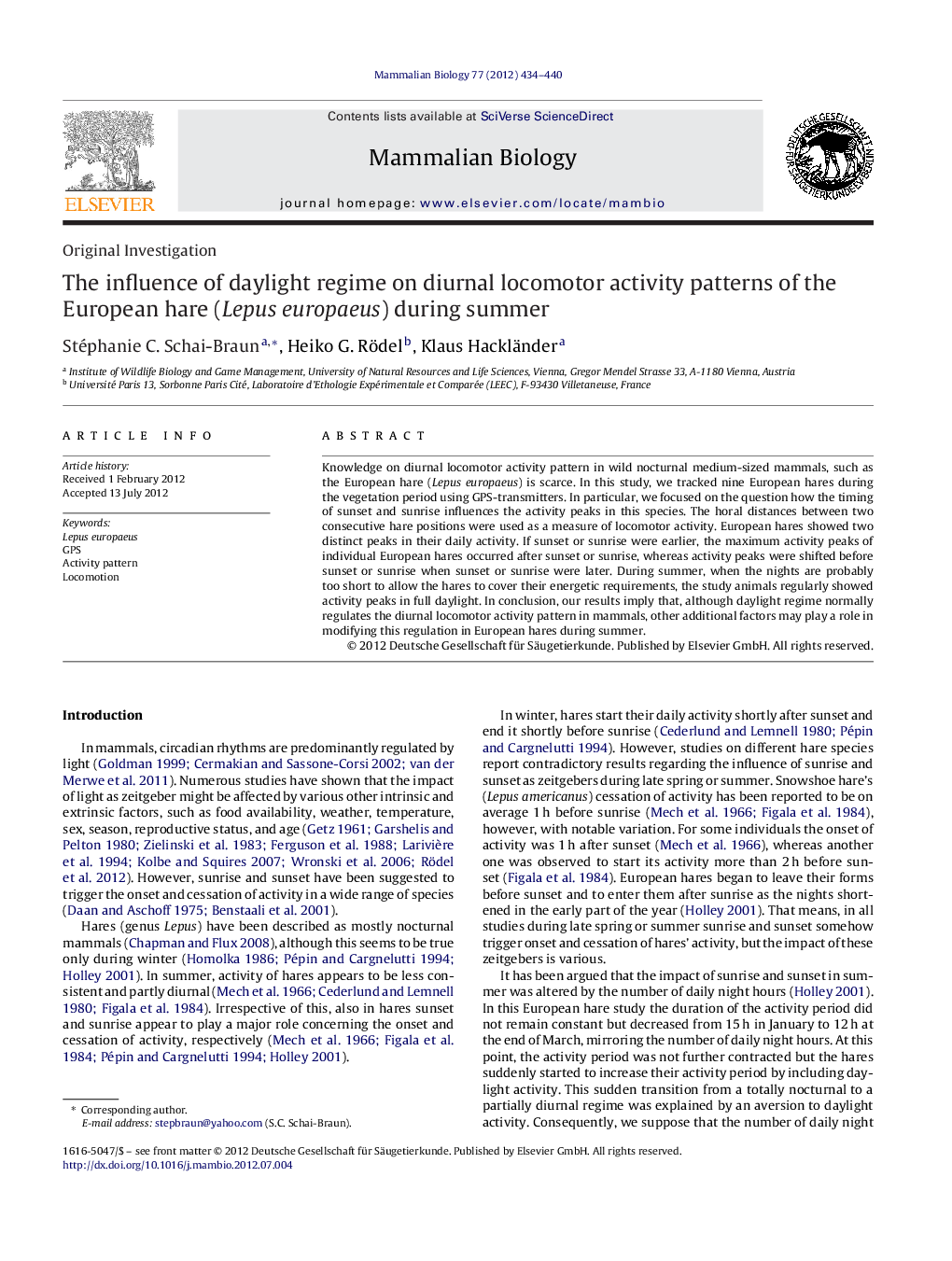| Article ID | Journal | Published Year | Pages | File Type |
|---|---|---|---|---|
| 2193564 | Mammalian Biology - Zeitschrift für Säugetierkunde | 2012 | 7 Pages |
Knowledge on diurnal locomotor activity pattern in wild nocturnal medium-sized mammals, such as the European hare (Lepus europaeus) is scarce. In this study, we tracked nine European hares during the vegetation period using GPS-transmitters. In particular, we focused on the question how the timing of sunset and sunrise influences the activity peaks in this species. The horal distances between two consecutive hare positions were used as a measure of locomotor activity. European hares showed two distinct peaks in their daily activity. If sunset or sunrise were earlier, the maximum activity peaks of individual European hares occurred after sunset or sunrise, whereas activity peaks were shifted before sunset or sunrise when sunset or sunrise were later. During summer, when the nights are probably too short to allow the hares to cover their energetic requirements, the study animals regularly showed activity peaks in full daylight. In conclusion, our results imply that, although daylight regime normally regulates the diurnal locomotor activity pattern in mammals, other additional factors may play a role in modifying this regulation in European hares during summer.
